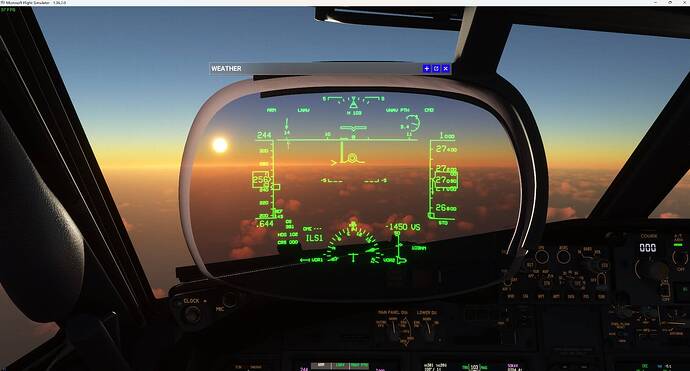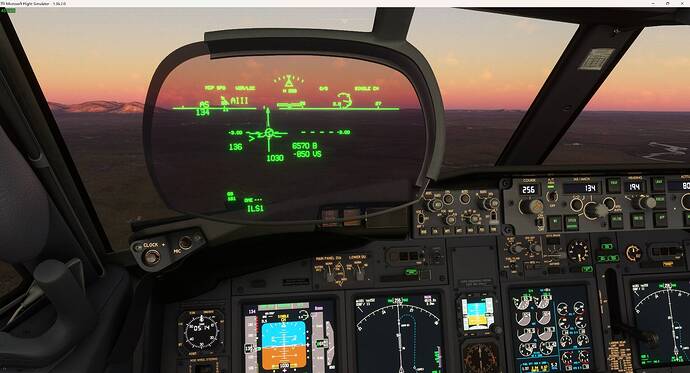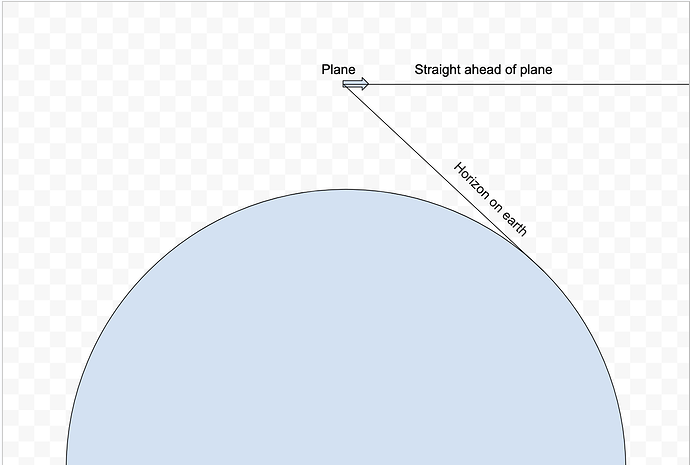The HUD in my PMDG 737 shows the horizon line way too high, and the predictive fly-to indicator (or whatever it’s called, shows me flying off to the horizon even though I am actually descending. The HUD in the default 787-10 does exactly the same thing. Is there a way to fix this?
Hi @Dreadnought06y ,
We moved your topic to the User Support Hub User Support Hub > Aircraft & Systems that is more appropriate to request support from the community.
I might be misunderstanding but that looks correct to me. There is lots to unpack - the “fly to” indicator as you called it is your current aircraft attitude. The FPV indicator and FD (outer and inner circles) show where you are actually headed and what the aircraft says you need to do. The indicator on the top is not telling you that you’re climbing or going above the horizon - it’s telling you that you’re at +1 or +2 degrees pitch and your flight path vector shows the extent you’re descending.
I don’t think that is correct. Here is another screenshot I took while on final approach. In this case it looks correct. The horizon bar is effectively on the horizon, and the FPV/FD indicators show where I am effectively headed - right at the start of the runway, in spite of the substantial crosswind, and the fact that I was 3 degrees nose-up at the time.
So on final approach it seems to work as I would expect. I’m just wondering why it’s completely off in cruise or descent.
At almost 30,000’ you’re considerably higher than the surface of the Earth which is curving away from you. The distance to the horizon is also much greater than when nearer sea level.
In purely geometric terms it’s impossible for the horizon to align with zero degrees pitch, it must be below you.
I’ve no idea how accurate the sim is in this respect, but dont think it’s an issue with the HUD.
This video shows the same effect at 2:10…
Edit: …and a few seconds later states what I said above re. curvature of the Earth.
Indeed, the higher you go the wider the “gap” between the level line and the horizon on the earth’s surface. It’s quite pronounced at 30,000 feet, and relatively small at 6,500 feet surrounded by hills.
A crude diagram ![]()
That does make sense - I did not think of that. I suppose that means that HUDs are basically calibrated to work at roughly 4 or 5000 feet or lower above ground level. Obviously there is not much of a need for HUDs above that.
I’ll experiment with that a little, take screenshots at various altitudes, and see if it gets better and better the closer to the ground you get.
I suppose that means that HUDs are basically calibrated to work at roughly 4 or 5000 feet or lower above ground level.
No it’s correctly calibrated; the visible horizon really is lower than level!
Aiming your velocity vector at the visible horizon where sky meets earth will mean you are descending – aiming at your velocity vector at the line that marks horizontal will mean you are moving level and horizontal.
It’s not a calibration thing. The solid line across the centre indicates zero degrees in pitch, if the flightpath marker/velocity vector is on the line you know the aircraft is flying level.
Where the visible horizon is in relation to this is irrelevant. In fact, flying towards the horizon means you’ll actually be descending.
I nearly drew the same thing earlier ![]()
This topic was automatically closed 365 days after the last reply. New replies are no longer allowed.



